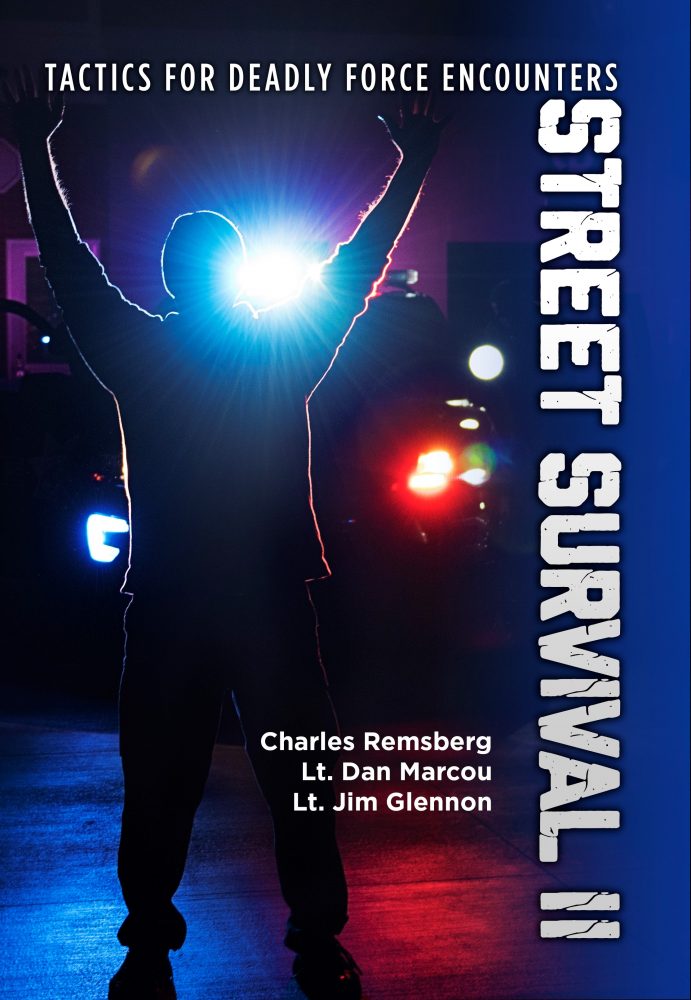You’ve heard it again and again, but it bears repeating: Consistent participation in realistic training is perhaps the most critical element in developing peak performance and maintaining safe, effective officers.
In Calibre Press’s popular textbook, Street Survival II: Tactics for Deadly Encounters, national trainer Ken Murray, an original co-founder of Simunitions and a tireless advocate for reality-based training, shares 13 steps trainers should follow to ensure safer force-on-force training.
Here they are:
Safety sweep. Check the training environment to make certain there are no unsafe conditions or circumstances.
Safety brief. All attendees are reminded of the safety rules and that they are just as responsible for their own safety as those conducting the training.
Evolutionary brief. The lead trainer explains generally how the training will progress.
Triple check. This is a very important step for maintaining safety. Trainees, trainers, observers and role players check themselves to make sure they have no live weapons or ammunition. Then a partner checks them. Then another trainer checks them. This is done for anyone in the training area, even visitors there to observe. This procedure is repeated for anyone who leaves training and returns.
Role player prep. The role players need to be given specific guidelines to follow. This is important to not only ensure that the training or testing objective is met but also to make certain they do not deviate from their roles and create an unsafe environment.
Equipment check. All equipment used in the scenario needs to be checked to make certain no live weapons are used. All safety equipment needs to be functional. The bare minimum safety equipment for force-on-force training with Simunition-type marking cartridges are a full-face helmet, throat protection and groin protection (for both men and women). Much more is recommended for role players who are taking many hits. Full-body protection is warranted and specially designed to blunt the trauma of the impact of these rounds.
If you are using force-on-force weapons, it’s imperative for the weapons to be checked at this time. You must be certain that the magazines are loaded with the right rounds and that no live or more damaging rounds than intended have been accidentally mixed in.
Equipment issues. An experienced trainer should issue the equipment and control and command the proper charging of any force-on-force weapons that are to be used.
First safety loop. All safety equipment on participants is checked to make certain it is properly in place. You determine if students have any pre-existing injuries and document them.
Second safety loop. At this point you are about to start the training scenario or isolation exercise, but you pause one more time and ask the training safety officer, “Is it safe to begin?”
After receiving the thumbs up, the officer in charge asks the trainees, “Do you feel safe to continue?” It’s at this moment a trainee should speak up if he/she sees absolutely any condition that is unsafe and might lead to injury. Otherwise, the trainees give the thumbs up.
Start exercise/scenario. The training officer in charge calls out, “The range is hot.” and “Begin scenario/exercise.”
Anyone can stop a scenario if someone has been injured or may be injured by shouting, “Stop!” or “Red!”
Stop exercise. The training officer calls out, when appropriate, “End scenario/exercise.”
Safety loop. After every scenario or isolation exercise, the participants are asked if there are any injuries. If not, this should be indicated with another thumbs up.
Debrief. This is when the officer in charge, the student officers and the role players debrief the scenario/exercise to enhance the learning experience. Two questions that can be asked to help draw out learning points from the students are: “Why did you do what you did?” and “How do you see yourself acting the next time this same thing happens?”
If you haven’t already, be sure to grab a copy of Street Survival II: Tactics for Deadly Encounters for nearly 400 photo-packed pages of officer safety insights, tactical guidance and expert training advice. For decades, this iconic textbook–recently updated to include crucial new information–has served as the cornerstone for officer safety efforts and has been credited for safety scores of officer lives.










0 Comments